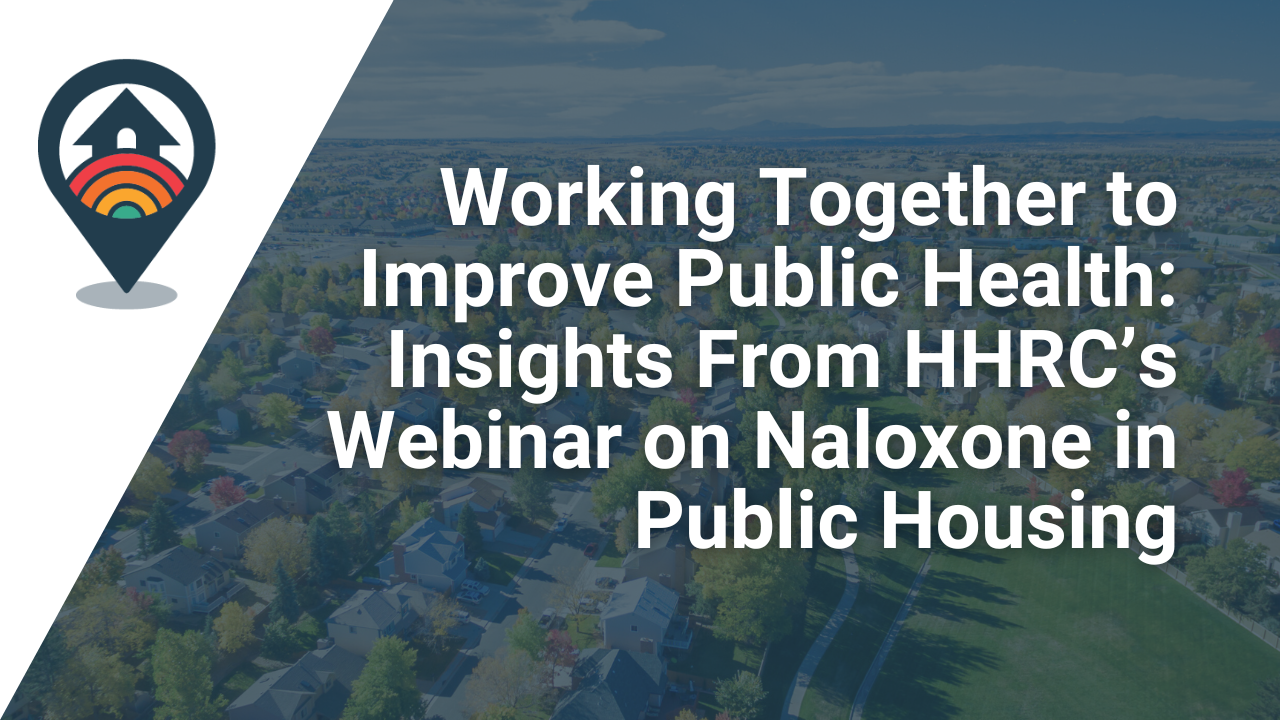The Homeless and Housing Resource Center’s (HHRC) webinar, “Naloxone in Public Housing: Success in St. Louis,” shared critical lessons and reflections on a collaborative public health endeavor in St. Louis, Missouri. The presenters illuminated the collaborative strides taken in St. Louis to confront the opioid overdose crisis through increased naloxone access within public housing communities. Representatives from the Missouri Institute of Mental Health, Family Care Health Center, St. Louis Housing Authority, and the harm reduction community shared how they have worked together to save lives and reduce overdose deaths. Admiral Rachel L. Levine, M.D., provided opening remarks.
Empowering Community Through Collaborative Efforts
A critical takeaway from the webinar is the power of cross-sector collaboration in addressing complex public health crises. Following a devastating overdose incident in St. Louis, a concerted effort involving local health departments, housing authorities, and community health workers emerged. This cross-sector partnership included the Missouri Institute of Mental Health, local health departments, the St. Louis Housing Authority, community health workers, and residents. Their goal is to increase access to naloxone—a life-saving medication that reverses opioid overdoses.
Central to the initiative is the aim to tackle the opioid epidemic through education, harm reduction strategies, and the provision of health resources while also navigating the complexities of systemic racism and historical disinvestment in predominantly Black communities. The collaborative model emphasizes the importance of engaging directly with the community and leveraging the trusted positions of community health workers to deliver not only naloxone but also a broader spectrum of support and resources to address the social determinants of health. As Dr. Rachel Winograd and her colleagues noted, the initiative thrives on the synergistic contributions of various interested parties, demonstrating that the battle against opioid overdose is a collective endeavor.
Understanding that Historical Context Matters
Understanding the historical context of systemic racism and segregation in St. Louis is crucial for addressing the racial disparities in opioid overdose deaths. The webinar highlighted the city’s long-standing issues of racial segregation and disinvestment, particularly in North St. Louis, underscoring the importance of tailored interventions that consider these deep-rooted challenges.
Positioning Harm Reduction as a Keystone
Harm reduction principles serve as the keystone of this initiative, challenging the stigma associated with drug use and advocating for compassionate, evidence-based interventions. Through education and direct engagement, community members are equipped with the tools and understanding necessary to save lives. During the webinar, Pastor Pamela Paul highlighted the transformative impact of harm reduction training, not only in saving lives but in altering perceptions about addiction and recovery.
Using Community Health Workers as a Bridge
The invaluable role of community health workers in bridging the gap between residents and resources was a focal point. Community health workers, embodying trust and relatability, are instrumental in dismantling barriers to service access. Their ground-level interactions, as detailed by DeAnthony Henderson and Hanna Oberg, exemplify the personalized approach that marks the success of outreach efforts in public housing settings.
Overcoming Legal and Policy Barriers
The initiative navigated significant legal and policy barriers, particularly those related to housing policies that could potentially penalize residents for substance use. The webinar discussed the importance of policy reform to ensure that existing regulations do not hinder the distribution and use of life-saving interventions like naloxone.
Conclusion
The “Naloxone in Public Housing: Success in St. Louis” webinar provides a blueprint for action, with compassion, collaboration, and determination. For more information and resources, we encourage you to visit our website and learn more about this vital public health endeavor.
This blog post was developed with the assistance of generative artificial intelligence.


